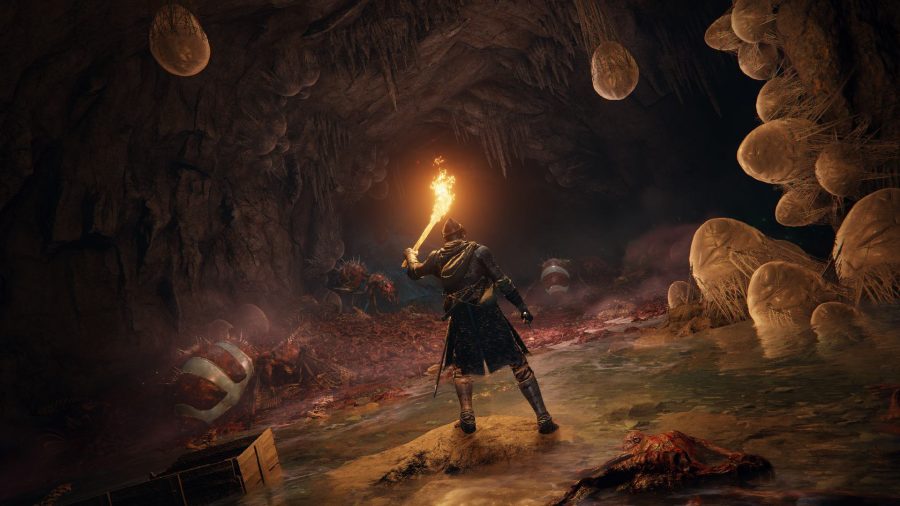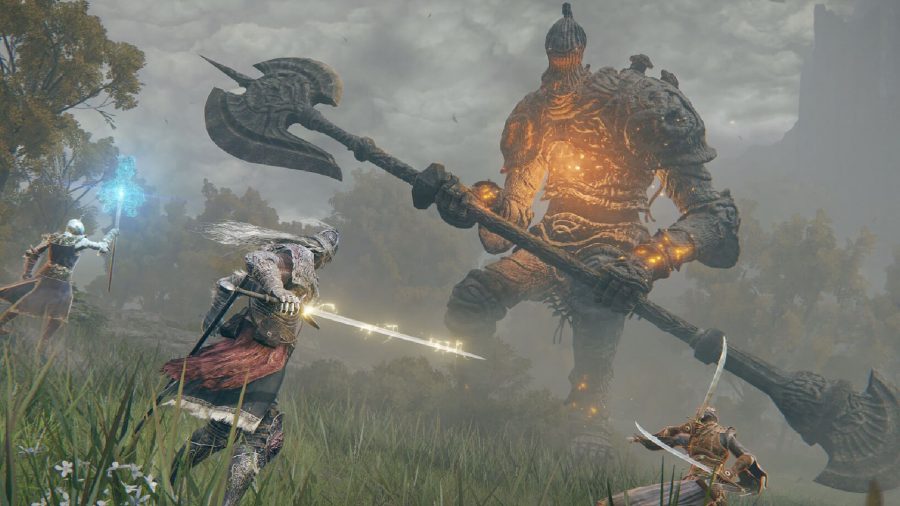Having not touched any of the Dark Souls games before jumping into Elden Ring, I felt a bit intimidated by the gameplay style of the series. So, instead of trying to grasp the tried and tested combat style of those games – that is with a sword in one hand and a shield in another – I initially began my run through The Lands Between using a Bloodborne-style build. And, it actually worked much better than I expected.
Initially, I wasn’t too keen on the weapon I started with as a Confessor, so I began experimenting with anything I could get my hands on. Eventually, I settled on the flail. I quickly realised that this was easily one of the best early-game weapons in Elden Ring and, as a result, it felt like I had struck gold.
With its blood-loss build-up, dealing extra damage to opponents as I hit them consecutively, I realised that the chunks of health that were being removed every few seconds sped the gameplay and combat up considerably. The game began to feel rather similar to Bloodborne, where fast-paced action is rewarded.
On top of that, the mechanic of landing multiple hits and overwhelming your enemies reminded me of how you could regain lost health by attacking right after taking damage in Bloodborne. Granted, in Elden Ring you don’t regain health but the fast attacks of the flail sped up the whole combat experience.
I then happened to stumble upon the Quickstep Ash of War from one of the many NPC locations dotted around the map. It turned out that this was a great complementary tool for my flail and once I had them running in tandem, I began to feel like Elden Ring could be played entirely like Bloodborne if you wanted to, not cornering you into a specific playstyle like Demon’s Souls and Dark Souls.
While I still kept a shield on hand, I occasionally dropped it for a staff so I could cast a few light spells here and there. Then, with a few well-timed dodges, I was able to weave in and out of attacks, landing hits where I could, and using Quickstep to take a breather.
This simple build made the game so much more thrilling and action-packed in its early hours. And it’s all thanks to this Bloodborne-esque build. It also allowed me to play in a way that I found familiar, before slowly transitioning to a less aggressive playstyle.
I love a good dose of fast-paced action and the flail and Quickstep offered that in Elden Ring. While I eventually switched to the Moonveil katana and a more magic-focused role later in the game, I still have a few traces of that hectic, action-packed Bloodborne style of combat within my playstyle. The Moonveil katana also acts as a defacto firearm from Bloodborne with its ranged strike of light that I can send out using its skill.
The fact that these fast-paced builds work in Elden Ring against any boss order you attempt is a testament to just how customisable the game is. You can make any class you want work in Elden Ring: sorcerer builds, Dragon Incantation-only builds, no armour melee-only builds, or just a simple and traditional sword and shield.
A lot has been said about Elden Ring’s approachability with the open-world, spirits, ability to over-level, and more; but FromSoftware really manages to achieve the true open-world RPG promise in Elden Ring by letting you create a character in the way you want and allowing you to play in your own unique way – even if that way is exactly like one of FromSoftware’s other masterpieces.


